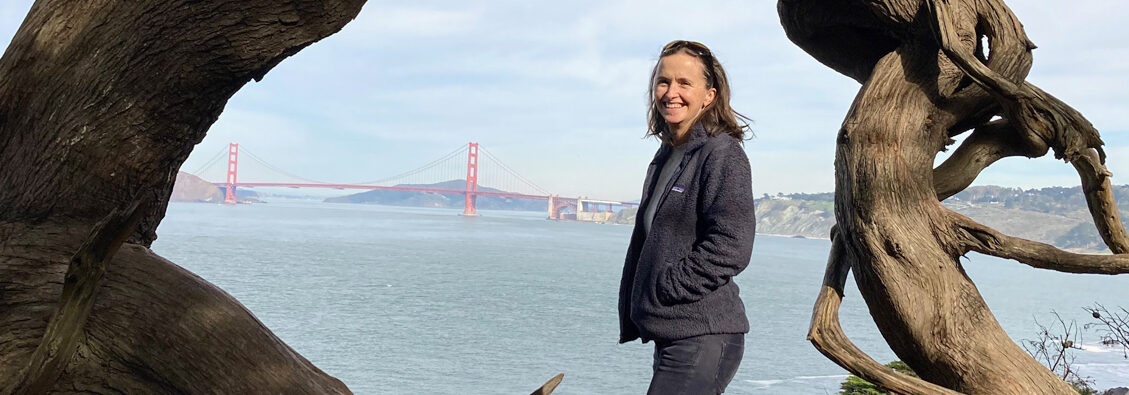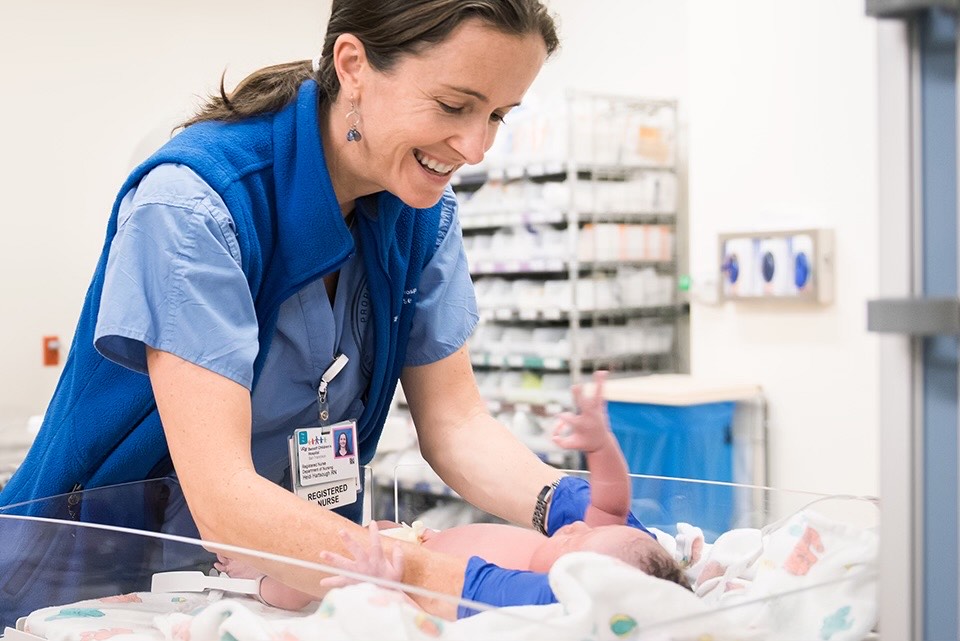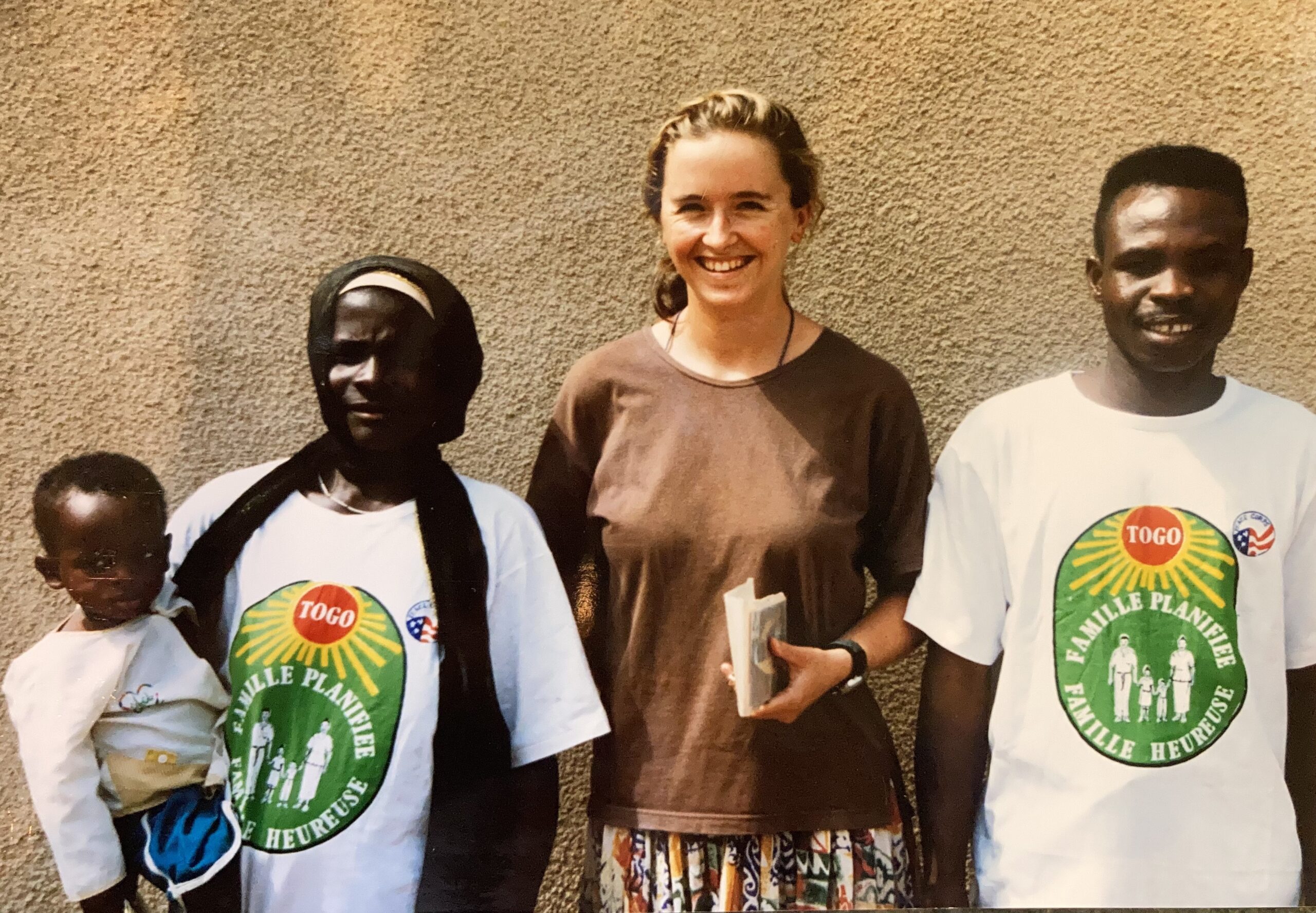Heidi Hartsough’s journey from the Peace Corps to ZCP Volunteer

Heidi Hartsough lights up a room when she steps into it. Her smile, even when talking about grief and loss, is ever present, and when she talks about her volunteer work with Zen Caregiving Project (ZCP), an easiness and lightness appear. In many ways, Heidi has been called to ZCP as a volunteer at Laguna Honda Hospital where she offers her presence five hours a week sitting with residents and families.
As a registered nurse at UCSF Medical Center, Heidi understands what happens in the medical system as a patient, but her roles as an RN and a volunteer are vastly different.

“When I start my 13-hour shift at the hospital, I just jump in, doing, doing, doing, and there is no check-in or space to just be. My job is doing all the time.”
“At ZCP it’s simply about being. I love when I put on my lanyard that says Volunteer, and I can enter a room and offer my presence. These experiences complement one another, and I have grown from being a nurse and a volunteer,” Heidi continues.
Her journey to ZCP started at a young age with parents who instilled in her the value of giving back to her community. The daughter of Quaker parents, Heidi grew up in San Francisco.
“I know that my childhood and how I was raised were hugely influenced by service. My parents saw everyone as equal, and I learned early that a person should show up to be all that they can be,” she explained.

Indeed, Heidi showed up early for service when she followed in her mother’s footsteps and joined the Peace Corps after studying public health in college. She spent three and a half years in Kouloumi, Togo in Western Africa, a small village located between Ghana and Nigeria. It was there, living with a midwife and working with the villagers, that she felt called to be a nurse with a focus on women and maternal health.
“The traditional way in which death and birth were held in Togo and how death was so accepted as a part of existence made a huge impression on me. We don’t talk about stillbirth, neonatal loss, or infant birth in America,” she explained.
In Africa, when asked the question, “ ‘How many children do you have?’ The answer was always followed by, “Oh, I have eight children and three are living.”
That was an answer she’d never heard before in America. “The traditional way in which death and birth were held and how death was so accepted as a part of existence made a huge impression on me,” she said.
Like many professionals with children, Heidi began to find a few extra hours available each week as her children grew older. She knew she wanted to do meaningful volunteer work, and that’s how she came across the Zen Caregiving Project.
“My parents were getting older, and I wanted to explore how I could gain more experience and knowledge as a mother and a daughter,” she said. “It felt amazingly natural as a labor and delivery nurse and my desire for service to volunteer with an organization like ZCP.”
At Laguna Honda Hospital (LHH) in their palliative care ward, Heidi was struck by the fact that we are all just human beings sitting together with stories to tell.
“To be in community with one another, to be in the presence of someone else even when we don’t communicate, is powerful,” she explained. “We are meant to practice loving kindness with one another, and this work has made me a much more grounded person and keen to sit with curiosity and patience to see what unfolds in everyday interactions.”
“As volunteers, we are present at our most vulnerable with those who are at their most vulnerable; we should not shy away from that,” she continues.
Heidi surprised herself early on after leaving her volunteer shift at LHH. “Each time I left my shift at Laguna Honda, I felt energized and connected even when someone had just died. The way death was framed in my Peace Corps days influenced this,” she said.
“We need to talk about death more often,” Heidi said. And at Zen Caregiving Project that’s exactly what she does.
On the wall behind Heidi, there is a painting of four blue hands with white dots on them. They appear to be hands raised as if waiting their turn to be next. “Come Heidi, sit with me. Be with me,” the art suggests.
May we all be fortunate enough to have a Heidi by our side when our time comes.
If you like what you read, please join us and enroll in one of our courses, share our work with someone you think will benefit from it, or support us through a donation.

